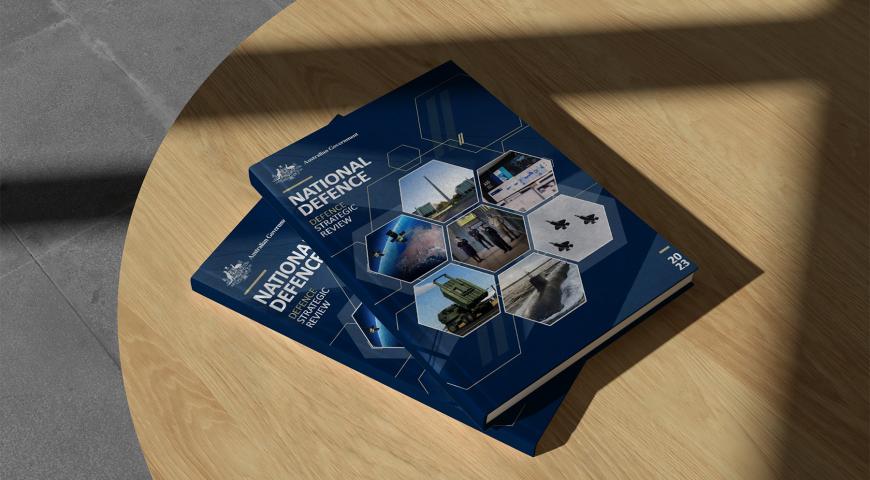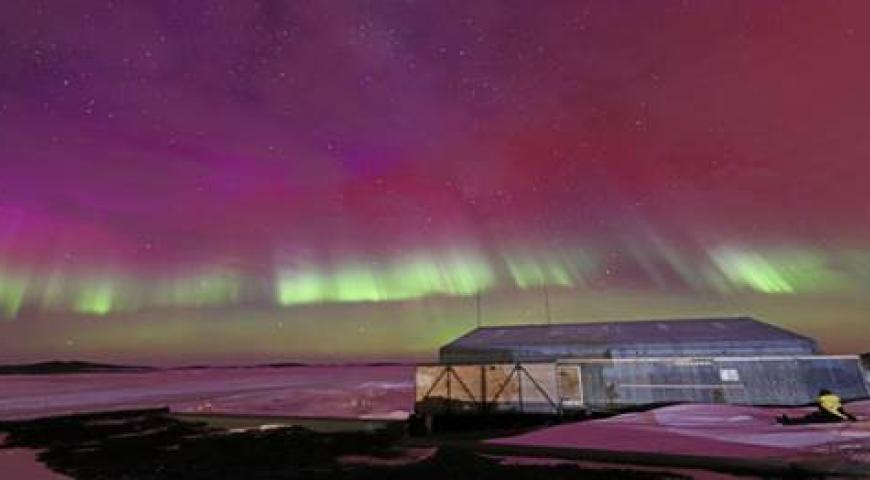Introduction
In his 2021 commentary, Ahmed Hashim provocatively asks: “Can Asians fight?”[1]. An American scholar with Asian ancestry, Hashim uses this question to frame an examination of how particular Asian countries have adapted to the changing character of warfare. Hashim considers how the advent of high-tech conventional warfare changed the character of warfare and examines how particular Asian countries have adapted to this change. However, in his accompanying lecture on this topic, he juxtaposes the development of military culture in Asian countries against the development of the ‘Western Way of War’. Historians argue this approach to warfare is linked to liberal and disciplined societies which engender an internalised military discipline that reduces the need for internal coercion within the military.[2]
This premise of a disciplined Western culture providing a cornerstone to Western militaries caused me to reflect: is this premise still valid? With the shift from industrial economies to service economies, Western democracies have placed increased importance on individualism. As concepts like nationalism and community collectivism become anachronistic, what influence does this change in the character of society have on the character of war in major conflict, mindful that the visceral nature of war endures as a clash between opposing wills. In a future major conflict, a better question may be: “Can Australians (still) fight?”
This essay considers how the nature of war endures in modern conflict and how globalism and political warfare has changed the character of struggle between states. These factors will be examined against the changing character of Australian society to question whether the assumption that underpins our ‘Western Way of War’ – and thus our national military strategy – remains valid.
Enduring nature of war
Clausewitz contended that the nature of war is immutable, an extension of politics through a violent interaction between opposing wills. However, the ghastly consequences of Australia’s last major war, World War II, has largely faded from the national psyche. There is a perception within the public and some policymakers – buoyed by technological hubris – that war in the future will resemble the limited operations of Iraq and Afghanistan, remain as ‘grey zone’ activities, or occur in the cyber domain with less risk of violence.[3] While this was already contrary to previous evidence from ethnic conflicts in the Global South and Russia’s operations in Chechnya, Russia’s recent invasion of Ukraine has livened Australians to the possibility and scale of conventional warfare.
The war in Ukraine not only reminds Australians of the scale of conventional war, but also that such wars may not be short. This war has not followed the familiar template of a short conventional phase followed by prolonged stabilisation and reconstruction, as seen in Iraq from 2003. When nations commit their full weight of national power to achieve existential political ends, such as avoiding annihilation in the case of Ukraine, a protracted war is likely.
If there is a war in the Indo-Pacific, it is likely to be long and intense. This is if China follows Mao Zedong’s prescripts from his selected works ‘On the Protracted War’. Mao describes the first phase of a war against a peer or superior power as a prolonged strategic stalemate to degrade both sides’ power. This shifts the advantage, not to the side with tactical success, but to the side with the ideological strength, leadership, mobilisation, and strategic logistics. With shorter supply lines into the Indo-Pacific, China could then exploit opportunities for strategic offensives in unexpected areas to impose further losses and undermine their adversaries’ resolve. Ultimately, the other side “would be defeated because even the most powerful advanced nations could not sustain a long, costly, drawn-out war, especially when the alternative of a negotiated peace would not threaten the enemy’s homelands”. [4] What level of attrition and loss could Australia be expected to accept before the public calls for a cessation of hostilities?
Change in the character of war: the importance of pre-conflict struggle
Clausewitz also contended that the character of war changes, noting that every age has its “own kind of war, its own limiting conditions and its own peculiar preconceptions”[5]. A developing change in the character of war is the increased importance of the pre-conflict struggle – sometimes referred to as political warfare, coercive statecraft, or grey-zone operations. Since the 20th century, strategists have identified the advantage of preliminary shaping operations: to weaken and divide adversaries, ultimately undermining their will or ability to fight, and ultimately to achieve strategic objectives without the need for war. This is arguably an extrapolation of Clausewitz’s maxim, recognising these actions as an extension of war by non-violent means.[6] So while the kinetic phase of war can be expected to endure as protracted and violent, a change to the character of war that Western states must now (re)learn to consider is the need to defend against being preliminarily outmanoeuvred and having their will to fight undermined during periods of ‘peace’.
This pre-conflict struggle creates challenges for liberal democracies on several fronts. An adversary’s efforts to generate strategic, positional advantage and sow division within a state’s population must be countered to avoid being preliminarily outmanoeuvred and forced to accept a geo-strategic fait accompli. This would represent Sun Tzu’s acme of strategy, by ‘winning without fighting’. However, a skilful adversary will either conduct these actions undetected, or so incrementally that in isolation they do not justify a legitimate response.
Defending against this competition below the level of armed conflict is difficult for liberal democracies. Principally, it is difficult for governments to justify and explain the rationale for expending national power in the shaping phase prior to an overt threat of war. This includes countering malign influence against democratic institutions, or responding to the risk of becoming outmanoeuvred. . Without an immediate, existential threat, it is hard for the polity to accept the opportunity cost of investing resources to the pre-conflict struggle. Especially when these costs manifest as privation, reduction in social services, or increases in taxes or costs of living.
Ironically, not resourcing coercive statecraft during the pre-conflict struggle arguably increases the likelihood and cost of conventional war. Populations that don’t support investment in political warfare to counter emerging threats essentially force their governments to approach war as a reactive response when the immediacy of the threat is apparent. With this unwillingness to bear the cost of actions required to resist being slowly painted into a geostrategic corner, the availability of non-violent means to avoid war decreases.
A key element to deterring coercion is for adversaries to understand that unwanted action will elicit a response. Credibility to respond, whether by overt acts of war or incremental actions short of war, is influenced by a country’s resilience and will to fight. This will to fight needs to be signalled to potential adversaries for deterrence to be effective. A strong will to fight can be signalled during the pre-conflict phase by a nation’s actions such as making political and economic sacrifices to defend national interests or values. This depends on a nation’s ability to adjust their strategy in response to changing strategic circumstances and tolerate the associated risk and cost.. On the other hand, a state with political and social apathy towards areas of tangential interest emboldens adversaries to incrementally undermine their national will and their geo-strategic positioning.[7] How is Australia signalling its national will to this changing character of war?
Change in character of Australian society
Australia’s awareness of the cost associated with signalling national will has recently increased. The trade sanctions applied by China after Australia’s call for an inquiry into the origin of COVID-19 was arguably the first, overt, nation-wide sacrifice resulting from coercive statecraft endured by Australia since World War II. The potential for coercion from another state was a revelation for many Australians, as they have been broadly insulated from the cost of strategic competition and conflict.
Like many Western societies, there has been an increasing gap in Australia between militaries and the societies they represent. Since the abolition of National Service in Australia in 1972 – midway through the Vietnam War – the impact of wars after the end of the Cold war have not affected society directly. The wars of choice since World War II removed the requirement for mass mobilisation or defence spending. Australian spending on the military through the last 20 years never exceeded 6% of the Federal budget[8]. This minimises the tangible impact on the population of a nation at war; such as increases in taxation, government directed shifts in industry, or national rationing of critical resources.
The enduring nature of war and the approach China might apply to major conflict in the Indo-Pacific means future war for Australia will likely be protracted and costly. Even if the theatres of battle are distant from Australia, the economic disruption from war in the Indo-Pacific would be significant due to the economic interdependence from globalisation. Arguably, the impact on societies would be broader than previous instances of total war in the 20th century, even without considering the threat of nuclear weapons. The dependence of civilian society on the two new domains of war, cyber and space, means that regardless of how governments may try to insulate their society from the cost of war, there will be impacts on the modern conveniences that people today take for granted. This impact added on top of the other costs of war would exacerbate the vulnerability to Maoist Protracted War, with the Australian population increasingly unwilling to endure a long, costly, drawn-out war which undermines their standard of living.
Australians have lost the experience of privation and national mobilisation that contributed to success in World War II. The current focus on prioritising social comfort over national security and shielding populations from the costs associated with war, undermines the resilience of the population to endure and accept privation associated with an existential conflict. This is natural when the threat is low. However, the status quo has changed and so should Australian’s mindsets. Compare Australia’s current posture with the preparations in China of hardened communication systems, reserves of fuel and logistics, and a strong ideology rooted in a national narrative that has prepared the Chinese population for a protracted struggle.[9]
Conclusion
To revisit Hashim’s consideration of the impact high-tech conventional conflict has on the character of war, we can reconsider the question ‘Can Asians fight?’. The answer may be ‘It doesn’t matter because their population can endure.’ The nature of war as a violent and protracted contest of wills endures. The increasing importance of the pre-conflict struggle, and the requisite national will to endure the costs required to avoid war reinforces the significance of national will as a pre-requisite to avoid defeat. Hashim asserts ‘If you fail to understand changes in the character of war, you cannot make the changes necessary’.[10] If Australia wants to prepare for future war, it needs to place as much emphasis on preparing its population as it does for its military. Otherwise, the population will constrain the government’s investment in non-violent options to avoid war. Then when war becomes unavoidable and the cost of war is realised, the population will push for the first opportunity for political settlement, resulting in strategic defeat.
Babbage, R. (2020). "Ten questionable assumptions about future war in the Indo-Pacific." Australian Journal of Defence and Strategic Studies 2: 27-45.
Brands, H. (2014). What Good is Grand Strategy: Power and Purpose in American Statecraft from Harry S. Truman to George W. Bush. Ithaca and London, Cornell University Press.
Clausewitz, C. v. (1976). On War. Princeton, Princeton University Press, trans and ed. Howard and Paret.
Hashim, A. S. (2021). "Can Asians fight? Organisational-cultural impediments to the conduct of Asian high-tech conventional warfare." Australian Journal of Defence and Strategic Studies 3: 223-233.
Mahnken, T. G., et al. (2018). Countering comprehensive coercion: Competitive strategies against authoritarian political warfare, Center for Strategic and Budgetary Assessments.
Moore, E. (2019). "Attrition and the Will to Fight a Great Power War." Strategic Studies Quarterly Winter 2019: 10-17.
The World Bank, (2023). ‘Military expenditure (% of general government expenditure) – Australia’, accessed at 07 Feb 23 at https://data.worldbank.org
1 Hashim, A. S. (2021). "Can Asians fight? Organisational-cultural impediments to the conduct of Asian high-tech conventional warfare." Australian Journal of Defence and Strategic Studies 3: 223-233.
2 Such as Victor Davis Hanson and Geoffrey Parker
3 Moore, E. (2019). "Attrition and the Will to Fight a Great Power War." Strategic Studies Quarterly Winter 2019: p10
4 Babbage, R. (2020). "Ten questionable assumptions about future war in the Indo-Pacific." Australian Journal of Defence and Strategic Studies 2, pp38-39.
5 Clausewitz, C. (1976). On War. Princeton, Princeton University Press, trans and ed. Howard and Paret. 593
6 Mahnken, T. G., et al. (2018). Countering comprehensive coercion: Competitive strategies against authoritarian political warfare, Center for Strategic and Budgetary Assessments, p10
7 Moore, (2019). "Attrition and the Will to Fight a Great Power War." Pp10-11
8 The World Bank, (2023). ‘Military expenditure (% of general government expenditure) – Australia’
9 Babbage, (2020). "Ten questionable assumptions about future war in the Indo-Pacific.", p37
10 Hashim, (2021). "Can Asians fight?” pp223-224
Defence Mastery
Social Mastery
Please let us know if you have discovered an issue with the content on this page.
Comments
Start the conversation by sharing your thoughts! Please login to comment. If you don't yet have an account registration is quick and easy.




